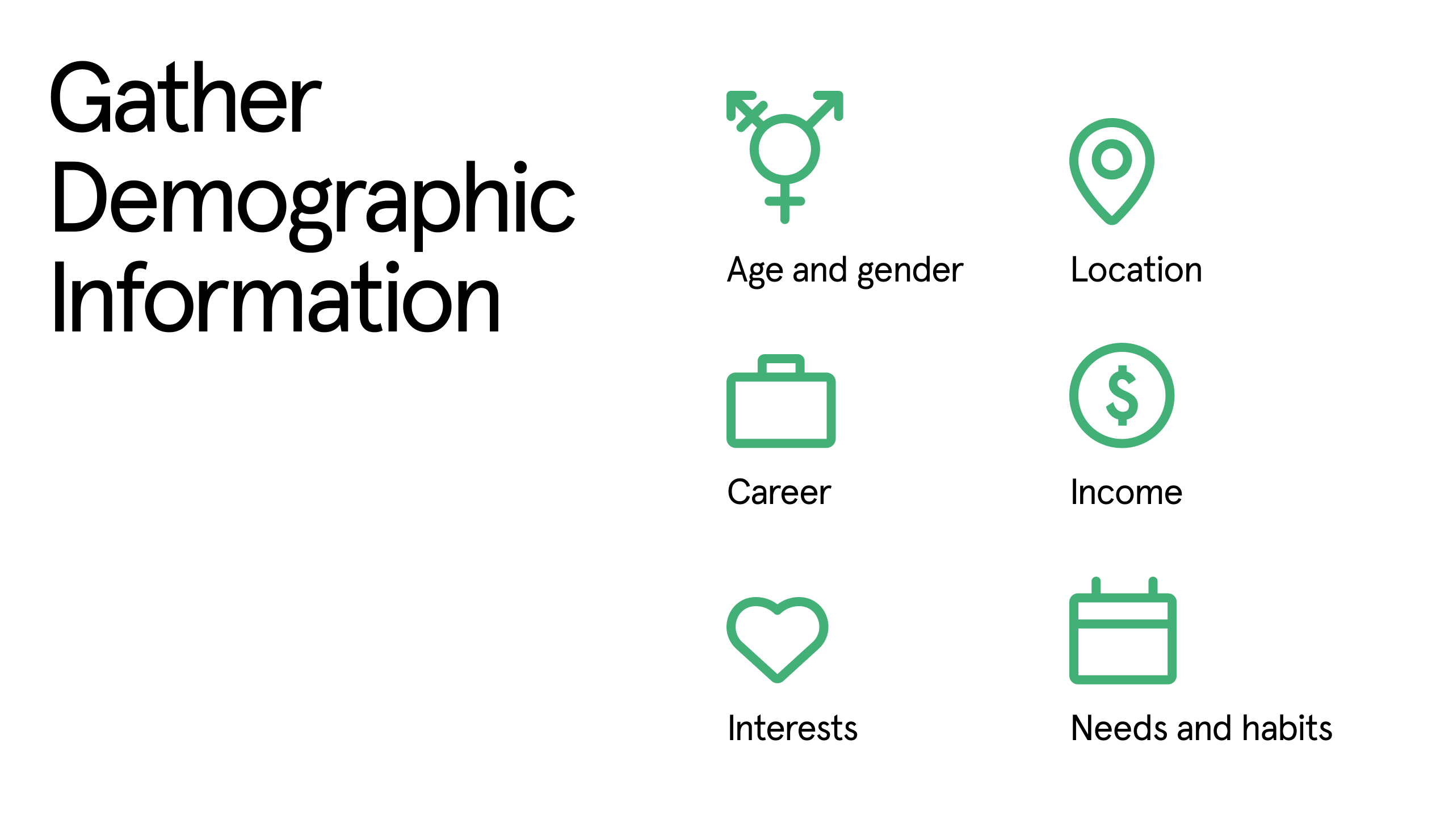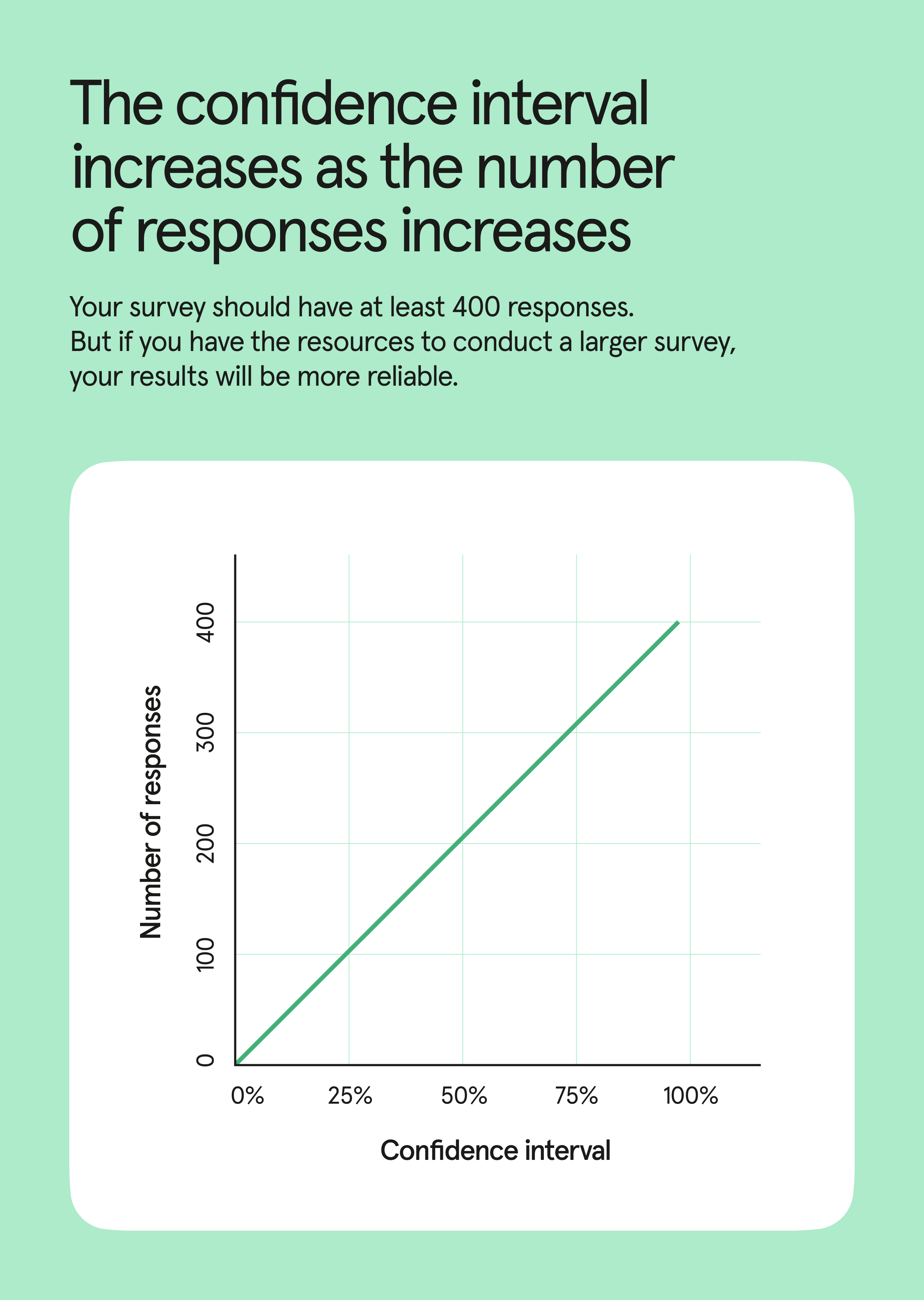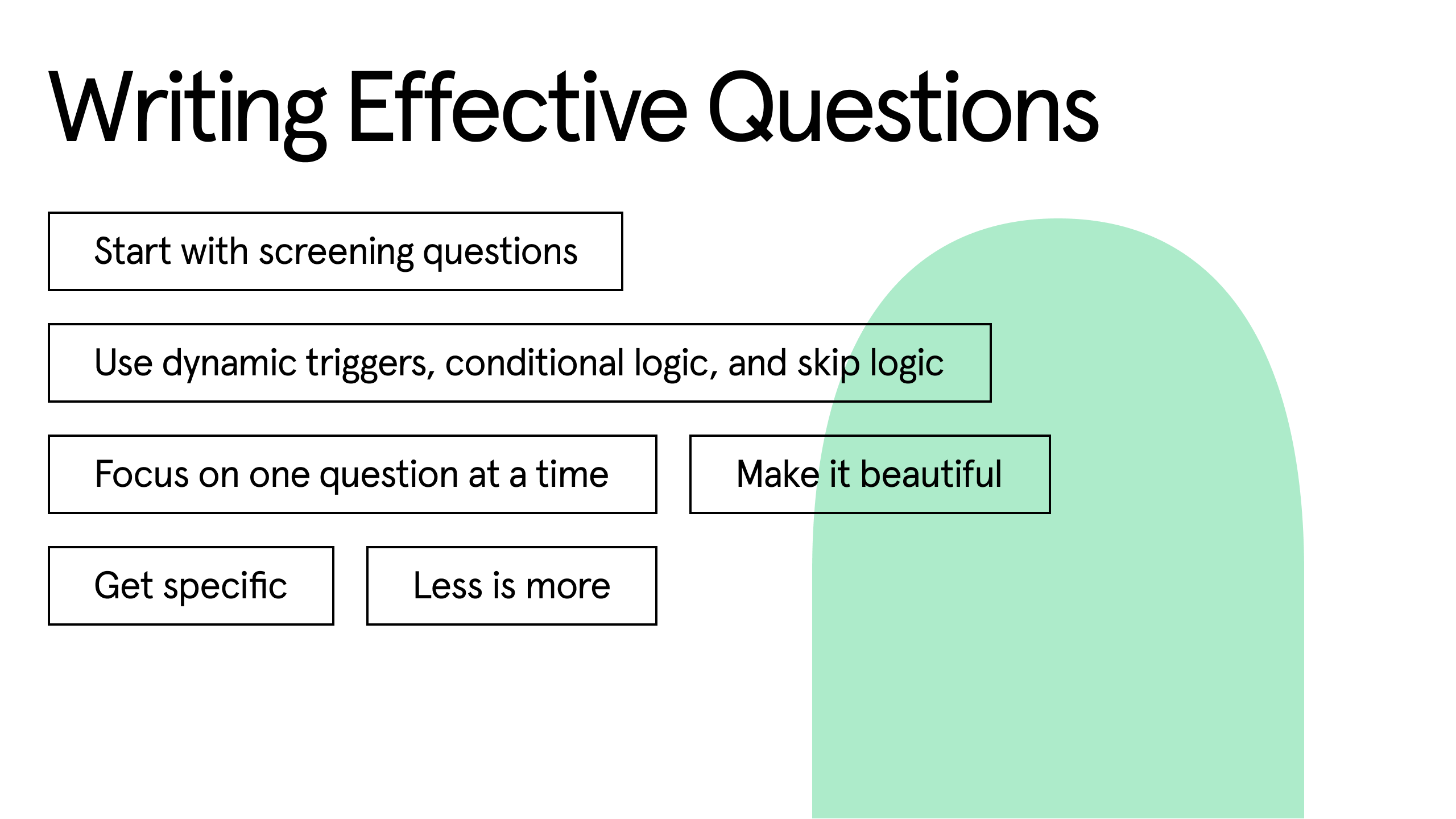How to survey your target audience
Target audience surveys are an effective way to gather information about your ideal customer to guide marketing efforts, assess product-market fit, and more.

Your target audience is out there waiting for your product to be the solution they’ve been seeking. But you also need proof of a product-market fit to secure funds from stakeholders, orient marketing efforts, and improve the product itself. This is where target audience surveys come into play.
These surveys help you understand the needs, values, demographics, and habits of people most likely to purchase your product. We’ll cover everything you need to know, from how to ask the right questions to best practices for sending a survey and even how generative AI can help every step of the way.
Identify your target market
Your product or service isn’t for everyone, and that’s a good thing. A product or service’s target audience—aka its target market—describes a consumer or group of consumers who are most likely to make a purchase. Brands conduct market research to define their target audience and conduct further research to determine how they can best target that audience.
Some information you might use to describe your target market includes:
- Age and gender
- Location
- Income
- Career
- Interests
- Needs and habits
You might segment a few audiences based on demographics, interests, or purchasing habits. This information helps build a picture of who your overall marketing strategy should target and allows you to maximize the potential impact of your campaigns (not to mention your budget). It can also inform changes you might make to improve your product-market fit.
SparkToro used Typeform to collect thousands of survey responses and help identify its beta audience. With insights the SparkToro team collected, they were able to launch features their target audience needed the most, provide more effective customer support, and even take early design feedback from beta users.
You might be wondering how you can replicate this success within your own company. Here are some insights the SparkToro team shared:
- Take the time to craft effective questions.
- Put your Typeform front and center to gather the most users.
- Use Typeform’s integrations to create spreadsheets and have usable data ASAP with the power of automation.
- Collect beta users with your Typeform.
- Create channels for follow-ups and optimize your Typeform as needed.
Determine survey size
Your survey should have at least 400 responses. But if you have the resources to conduct a larger survey, your results will be more reliable.
When conducting market research, we recommend gathering at least 400 responses for a higher confidence interval. But what does that mean? When it comes to survey size, more is more. However, larger surveys require more money, so just aim for enough responses to start interpreting unbiased data.
A confidence interval, typically expressed as 90%-95%, is the likelihood that your respondents are giving you accurate responses. For example, if 100 people tell you that they plan to resubscribe to your product once their contract expires and you’ve got a 95% confidence interval, you can expect 95 of those respondents to actually resubscribe.
Of course, the reality of your target audience will almost always be a little different from your survey results. Still, collecting more responses leads to a higher confidence interval and more accurate survey results.
Write effective questions
Your survey is only as strong as the questions you ask. And how you ask these questions is also important. Here are some of our top suggestions to make the biggest impact with your survey:
- Start with screening questions: Questions that can weed out respondents who aren’t good candidates for your survey save everyone time.
- Use dynamic triggers, conditional logic, and skip logic: Surveys that evolve as respondents progress are more engaging and ensure you have the right information.
- Focus on one question at a time: There are a lot of distractions in our daily lives—limit them in your surveys. Asking one question at a time makes people more likely to fill out and complete the survey.
- Make it beautiful: Branded and styled surveys keep respondents engaged as they progress through the questions.
- Get specific: Limit your open-ended questions and use scaled responses as often as possible to make reading your responses easier. Save these question types for when they' re necessary, such as gathering opinions in brand perception surveys.
- Less is more: Respondents will likely start to get bored after a while. Keep surveys as short and simple as possible to keep respondents from dropping off.
When it comes to crafting the perfect question, keep it simple and specific. You want to make it as easy to understand as possible. It’s also a good idea to think about how a question can give you the most information with the least amount of effort.
For example, if you want to know how much TV your target audience watches, asking, “Do you watch a lot of TV?” with a “Yes” or “No” option doesn’t give you a lot of information. “A lot” of TV is too subjective. Instead, try asking, “About how much TV do you watch in the average week?” and give a few specific response options, such as “One hour or less” or “Three to four hours.”
You can use many different types of questions to survey your target audience. Let’s go over some of the best questions to harness in your target audience survey:
- Close-ended questions: These questions have predetermined responses to choose from. They' re best for very simple black-or-white queries. For example, “Have you ever used Google before?” is a close-ended question because the answer is either “Yes” or “No.”
- Likert scale questions: These questions have responses on a scale. They' re good for creating measurable responses to more nuanced questions. For example, “How would you rate your flight experience?” with the options “Very poor,” “Poor,” “Okay,” “Positive,” or “Very positive” is a Likert scale question.
- Demographic questions: These questions ask respondents to self-identify key characteristics. Asking for a respondent' s age, gender, nationality, or career are all examples of demographic questions.
- Multiple choice questions: These questions are a type of close-ended question that allow respondents to pick from a few predetermined responses. They' re ideal for when you want to limit what people can say or test their knowledge about a topic. Asking “What city is the capital of Spain?” with the options “Barcelona,” “Seville,” “Madrid,” and “Granada” is a multiple choice question.
Administer the survey
According to HubSpot, the best time to send a survey is during workday lulls. Think about when you’re always checking your email—first thing in the a.m. or while you’re procrastinating after lunch, maybe? That’s the best time to send out your survey.
However, it also depends on who you’re targeting. For example, if you want to target people ages 65+, social media might not be the best choice, but it’s the way to go if you want to reach Gen Z.
Odds are there won' t be only one approach to conducting your survey. Even a target audience has subgroups, so you might want to further segment your audience, such as by income. Typeform’s dynamic triggers let you do this easily, sending different categories of people on different journeys from just one survey.
You’ve spent time perfecting your survey, and it’s time to share it with the world. Whether you want to embed your survey on your homepage, share it in some emails, or post a QR code, Typeform can help with that.
Analyze results
You’ve crafted your survey carefully and distributed it across various channels. So what now? When you get to that magic 400 number—or whatever goal you’ve set for form fills—it’s time to dive into what your audience is saying.
Typeform automatically reports on how people interact with your survey, showing you time to complete, drop-off rate, and even the devices respondents are using. We also create data visualizations of your responses so you can see big-picture trends at a glance. Sit back and let our analytics integrations take the lead, automating workflows for effortless project management and reporting.
Market research automation can’t do it all, but it can pull high-level insights to help guide your research. It can also update your project management tools as research progresses, send automatic reminders and follow-ups to respondents, reduce time spent on research, and more.
As the data rolls in, you can use it to inform your strategy. For example, if a commerce company finds that its target audience shops mostly online, it might be a good idea to devote more resources to its app and mobile experience. Insights from your target audience survey can help you distribute marketing resources efficiently to save time, money, and effort spent across the board.
Uncover data with Typeform
It’s important to be flexible when you’re trying to survey a target audience. Typeform makes it simple to craft optimized surveys so you can get the 411 on your audience.
Here are just a few ways Typeform helps you create a target audience survey while following survey best practices:
- Faster time to value: You don’t need to use any coding to create branded surveys and access any of the automated features Typeform offers, allowing you to spend less time on your surveys and start gathering data sooner.
- Strong mobile experience: It’s easy to optimize your surveys for mobile users, meeting respondents where they’re at and expanding your survey' s reach.
- Drop-off analysis: See where you might be losing people, allowing you to change your survey and maximize its potential instead of starting over when something’s not working.
- Generative AI: This technology helps you create effective questions to target your audience if you’re dealing with writer’s block.
Start your Typeform now to discover your next customer.
Liked that? Check these out:
.webp)
Tips
12 customer satisfaction questions that reveal real insights
Customer satisfaction surveys getting vague answers (or no answers at all)? The problem isn't your customers, it's your questions. Use these 12 CSAT questions to ask the right questions at the right time to boost response rates—and help you improve your customer experience.
Más información

Tips
14 examples of ranking survey questions to use in 2026
Get to know your customers and use their survey responses to make data-driven decisions with ranking survey questions that help you uncover more. We’ve rounded up 14 real-world examples to inspire your next survey and make creating effective ranking questions effortless.
Más información




